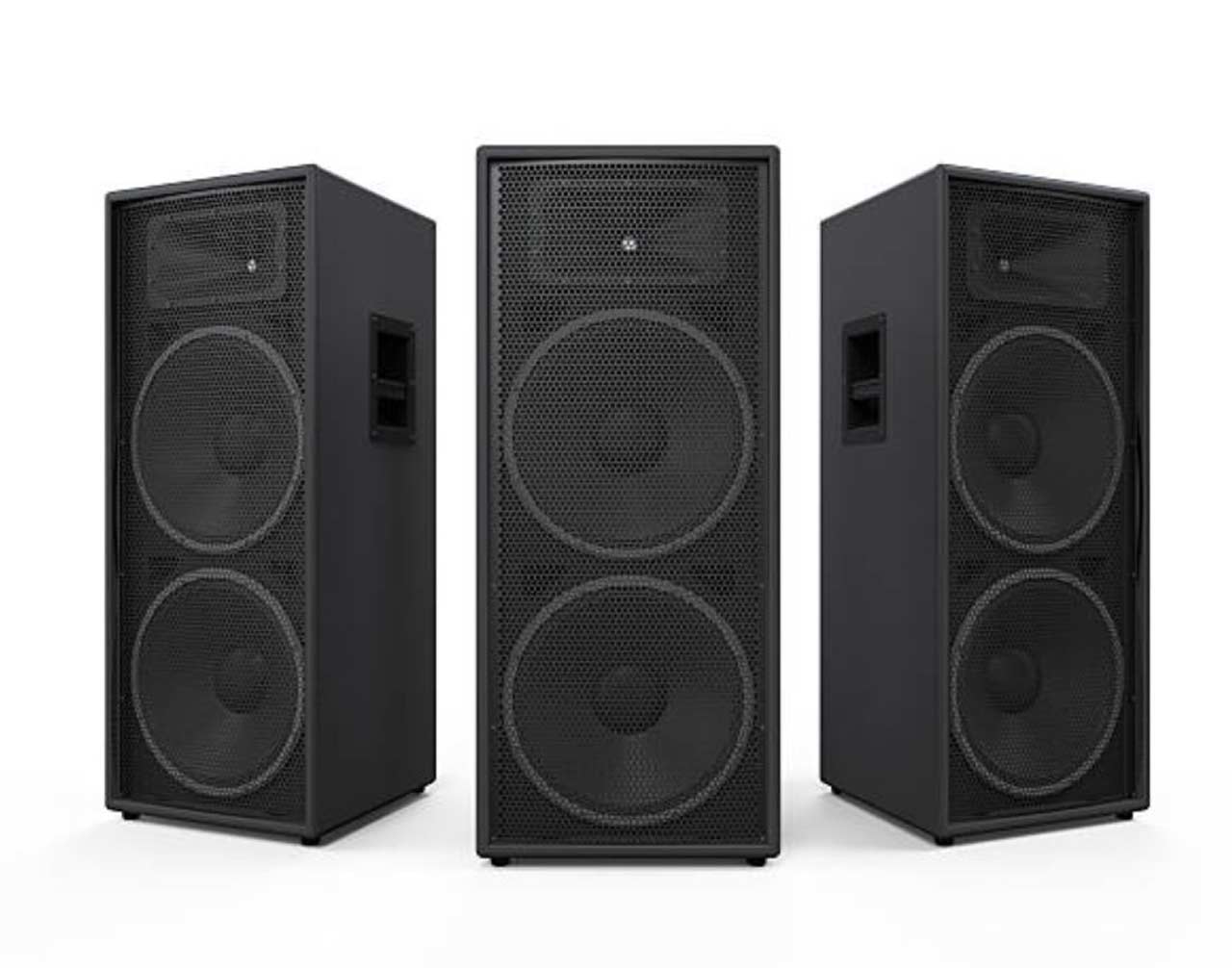 Acoustic control is essential in many environments, whether it’s for a construction project, office space, home theater, or even in a restaurant or nightclub. Effective acoustic control can improve sound quality, reduce noise pollution, and create a comfortable environment for both work and relaxation. Whether you’re building from scratch or upgrading an existing space, this guide will walk you through everything you need to know about acoustic control, including the best techniques, materials, and design tips for success.
Acoustic control is essential in many environments, whether it’s for a construction project, office space, home theater, or even in a restaurant or nightclub. Effective acoustic control can improve sound quality, reduce noise pollution, and create a comfortable environment for both work and relaxation. Whether you’re building from scratch or upgrading an existing space, this guide will walk you through everything you need to know about acoustic control, including the best techniques, materials, and design tips for success.
What Is Acoustic Control?
Acoustic control refers to the management and manipulation of sound within a given space. The goal is to reduce unwanted noise, improve sound clarity, and ensure that the acoustics within the room support the intended use of the space. This can involve controlling both sound absorption (reducing echoes and reverberation) and sound isolation (preventing sound from traveling between rooms or areas).
Why Acoustic Control Matters
Proper acoustic control can significantly enhance the experience of a space. Whether for professional, residential, or entertainment purposes, here’s why it’s so important:
- Improved Sound Quality: In spaces like home theaters, recording studios, or offices, controlling acoustics is essential to ensuring sound is clear, intelligible, and balanced.
- Noise Reduction: In busy environments, such as offices or homes near busy streets, acoustic control reduces external noise pollution, helping people concentrate and sleep better.
- Increased Comfort: Uncontrolled noise or poor acoustics can lead to fatigue, stress, and discomfort, especially in public places or work environments.
- Compliance with Regulations: In certain buildings, like hospitals or schools, sound control might be required by law to meet health, safety, and environmental standards.
Types of Acoustic Control
Acoustic control can be broken down into two main categories: sound absorption and sound isolation. Understanding the difference is key to choosing the right solutions for your space.
1. Sound Absorption
Sound absorption refers to the ability of materials to soak up sound, preventing it from bouncing off hard surfaces and creating echoes or reverberation.
- Purpose: To reduce noise within a room, create a quieter environment, and improve sound clarity.
- Materials: Acoustic panels, foam tiles, carpets, curtains, and fabric-covered furniture are excellent at absorbing sound.
- Best for: Rooms with a lot of hard surfaces, like concrete or tile floors, glass windows, and drywall walls, where sound tends to bounce.
2. Sound Isolation
Sound isolation involves blocking sound from traveling into or out of a room. This is particularly important in spaces where privacy is required or when external noise is a concern.
- Purpose: To minimize the transmission of sound through walls, floors, or ceilings.
- Materials: Mass-loaded vinyl, acoustic insulation, double-glazed windows, solid-core doors, and decoupling techniques are commonly used for sound isolation.
- Best for: Offices, bedrooms, recording studios, and multi-unit apartments where preventing noise from passing through walls or floors is crucial.
Techniques for Acoustic Control
Achieving optimal acoustic control requires combining different strategies and materials. Here are the top techniques to improve acoustics in your space:
1. Use Absorptive Materials
To prevent sound from bouncing around and causing echoes, use soft, dense, or fibrous materials that absorb sound. Some of the most effective absorptive materials include:
- Acoustic Panels: These are specifically designed to reduce sound reflections and reverberation. They can be mounted on walls, ceilings, and corners.
- Foam Tiles: Popular in home studios and offices, foam tiles absorb sound and reduce echo.
- Carpeting and Rugs: Soft flooring materials absorb sound better than hard floors like wood or tile, making them a great option for reducing noise.
- Curtains and Fabrics: Heavy, thick curtains can help absorb sound and are especially useful in windows to reduce external noise.
2. Install Sound Isolation Techniques
To ensure that sound doesn’t travel into or out of a room, use materials and methods that block or reduce sound transmission.
- Mass-Loaded Vinyl (MLV): This dense material can be used on walls, floors, and ceilings to block sound from passing through. It’s ideal for spaces where you need high levels of isolation, such as recording studios or bedrooms in noisy environments.
- Double-Glazed Windows: Double-glazed windows are more effective at blocking noise than single-pane windows. This is important for reducing external traffic or neighborhood noise.
- Acoustic Insulation: Adding layers of acoustic insulation to walls, ceilings, and floors helps prevent sound from traveling between rooms. Mineral wool and fiberglass are commonly used materials.
- Decoupling: Decoupling is a technique where walls, floors, or ceilings are separated using resilient channels, clips, or isolation pads to prevent sound vibrations from transferring through structural elements.
3. Use Diffusers to Spread Sound Evenly
Diffusers are used to scatter sound waves in different directions, preventing the sound from becoming too focused in certain areas. This helps create a more balanced and natural sound in the room.
- Purpose: Diffusers break up sound waves, preventing echoes and flutter echoes. This is particularly useful for spaces where you want clear, direct sound without sharp reflections, such as a concert hall or listening room.
- Materials: Diffusers can be made from wood, plastic, or foam, and are often placed on the walls or ceiling in specific patterns to disperse sound evenly.
Designing for Acoustic Control
Effective acoustic control goes beyond materials and techniques—it also requires thoughtful design. Here are some design considerations to achieve optimal acoustics:
1. Room Shape and Layout
- Avoid parallel walls: Parallel walls tend to cause sound to bounce back and forth, creating excessive reverberation. Consider using angled or non-parallel walls if you’re designing a new space.
- Strategic Placement of Furniture: The arrangement of furniture can impact how sound travels in a room. Place soft, sound-absorbing pieces (like sofas, cushions, and rugs) near reflective surfaces to minimize echoes.
2. Ceilings and Flooring
- Acoustic Ceiling Tiles: For rooms with high ceilings, acoustic ceiling tiles can reduce reverberation and improve sound quality. These are particularly useful in large open areas like auditoriums or conference rooms.
- Floating Floors: A floating floor system can decouple the floor from the rest of the building structure, reducing the transmission of noise from footsteps or furniture.
3. Acoustic Zones
Consider dividing the space into “acoustic zones.” For example, if you have a large open-plan office, consider using partitions or soundproof booths to create quieter workspaces within the larger area.
Common Applications of Acoustic Control
Here’s how acoustic control is typically applied in different environments:
1. Home Theater Rooms
- Absorptive Panels: Install acoustic foam or fabric-wrapped panels to reduce reverb and enhance sound clarity.
- Bass Traps: Place bass traps in the corners of the room to control low-frequency sound and prevent distortion.
- Soundproofing: Use heavy doors and window treatments to block external noise, and add soundproof insulation in walls and ceilings.
2. Offices
- Acoustic Ceiling Tiles: Help absorb sound in large office spaces to reduce noise levels and create a more productive work environment.
- Soundproof Partitions: In open-plan offices, soundproof partitions or acoustic pods can create quiet zones for phone calls or meetings.
- Carpeting and Soft Furnishings: Use carpets, rugs, and soft seating to reduce noise and create a comfortable, productive space.
3. Restaurants and Cafes
- Noise-Reducing Panels: Install decorative acoustic panels or ceiling tiles to absorb sound and reduce background noise, creating a more pleasant dining atmosphere.
- Soft Furnishings: Cushions, upholstered chairs, and heavy curtains can all contribute to reducing noise levels in busy restaurants.
4. Recording Studios
- Sound Isolation: Use mass-loaded vinyl, acoustic insulation, and decoupling techniques to prevent sound leakage.
- Absorptive Treatments: Acoustic foam and bass traps help create a controlled, clear recording environment.
Conclusion: Mastering Acoustic Control for Success
Acoustic control is essential for creating the ideal environment in both residential and commercial spaces. By understanding the principles of sound absorption and sound isolation, selecting the right materials, and applying effective design strategies, you can achieve excellent acoustic performance.
Whether you’re building a recording studio, designing an office, or improving your home theater, these tips and techniques will help you manage sound and create a comfortable, productive, and enjoyable environment. Remember, successful acoustic control is not one-size-fits-all—take the time to analyze your space and choose the right combination of solutions that work best for your needs.







